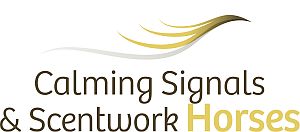Description
What can you expect from the online course ‘Calming Signals’?
Available now!
In three parts we’ll dive into the world of Calming Signals. The course mainly consists of videos so that you can really learn to observe and analyse. The video material makes this such a valuable addition to the book.
PART 1
In Part 1 the focus is on the Calming Signals themselves. What different signals are there, how can you recognize them individually and how can you use the communication ladder to learn to understand them?
PART 2
In Part 2 we’ll zoom in on tension and stress. What signals should you learn to recognize? How does the principle of displacement behaviour work; and what if a horse no longer shows any signals and shuts down? Of course you will also use the communication ladder again in this chapter.
PART 3
In the last part we will apply the calming and stress signals in practice. Case studies will allow you to really begin to put the calming signals into practice. How can you as a human being use them in your interactions with horses? We’ll cover all this and more!

What can you expect from the online course ‘Scentwork’?
Available now!
In four parts we’ll take you into the world of Scentwork for horses. The course mainly consists of videos, so you’ll get lots of practical examples and explanations. The video material makes it a valuable addition to the book.
PART 1 – Brain, body and biology
In the first part you will delve into what Scentwork is and why it improves the horse’s welfare, development, learning ability and socialization, as well as the relationship with us humans. We start with a bit of theory on the brain, body and biology. How does the horse’s brain actually work? And which hormones play a role in tension, stress or relaxation? Why is mental stimulation so important? You’ll also learn more about the horse’s nose and biomechanics during tracking.
PART 2 – Exploration
In part 2 we move on to the practice, through Enriched environments. This literally means enriching the horse’s environment with objects. How can you build this up? Do you use treats or not? When do we see the urge to explore and when do we see fear? What choices could you make while exploring and so much more…
You’ll receive practical examples with different horses and different types of enriched environments.
PART 3 – Tracking & Treat Searches
We continue onto tracking and treat searches. Time for the horse to get searching! Why is tracking so effective? How do you activate the horse’s sense of smell? How do you lay a trail both at home and on unfamiliar terrain and how can you guide your horse through this?
PART 4 – In-depth explanations
The final part offers more in-depth explanations. What challenges could you encounter on your trail, or during your treat search, and how can you help your horse? How could you use tracking under saddle? From a scent bag to a missing person. And we conclude with a number of examples of challenging behaviour, where tracking has had a great positive effect.




